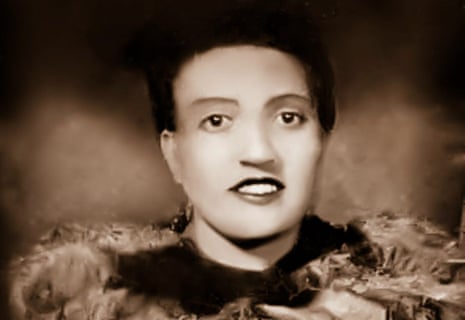A bronze statue of Henrietta Lacks – whose cells were taken from her body without her permission before they facilitated numerous medical advances – is taking the place of a monument to the Confederate general Robert E Lee that was removed from her Virginia home town, officials announced this week.
Sculptor Larry Bechtel is designing the statue that is scheduled to be erected in Roanoke in October 2023 in a victory for supporters of the Black Lives Matter movement. At an announcement ceremony on Monday, Bechtel said that he would reference a life-size drawing of Lacks by the artist Bryce Cobbs, ABC News reported.
Lacks’s grandson, Ron Lacks, attended Monday’s gathering and called the planned statue “an honor”.
“This historical moment, occasion, has been a long time coming,” said Ron Lacks, whose father, Lawrence Lacks, is Henrietta’s oldest and only living child.
The plaza where the Henrietta Lacks statue is supposed to stand once was home to a monument honoring Lee, whose army fought to secede from the US in large part to preserve the legality of slavery.
A man intentionally toppled the Lee statue after the murder of George Floyd, a Black man, by a white Minneapolis police officer ignited racial justice protests nationwide in 2020. City officials later voted against putting the statue of the white general back up for public display and renamed the plaza where it stood in honor of Lacks, a Black woman whose name is synonymous with medical breakthroughs.
Lacks became internationally known after receiving treatment for cervical cancer in 1951 at Baltimore’s Johns Hopkins hospital, which at the time was one of the only medical facilities accepting Black patients. A gynecologist obtained a sample of her cells and sent them to a lab for research without her knowing or giving permission, according to her family.
Lacks died within months, at age 31. But scientists discovered that her cells were “immortal”, multiplying daily, lasting longer than other samples seen by scientists and becoming the first human cells successfully cloned.
The resulting HeLa cells – so called because of the initial two letters of her first and last names – have since aided medical progress which has saved millions of lives. The cells were used for the polio and coronavirus vaccines, treatments for cancer and Aids, and gene mapping.
A bestselling book and HBO movie each named The Immortal Life of Henrietta Lacks chronicled her story.
The civil rights attorney Ben Crump, who is handling a lawsuit from Lacks’s family against the corporation which mass-produced and sold tissue taken from her, said the planned statue will honor invaluable – if unwitting – contributions to medicine.
“I just think it’s so fitting in the state of Virginia … where in the past we commemorated … men with statues that divided us,” Crump said. “Now here … we will have a statue of a Black woman who brings us all together.”
